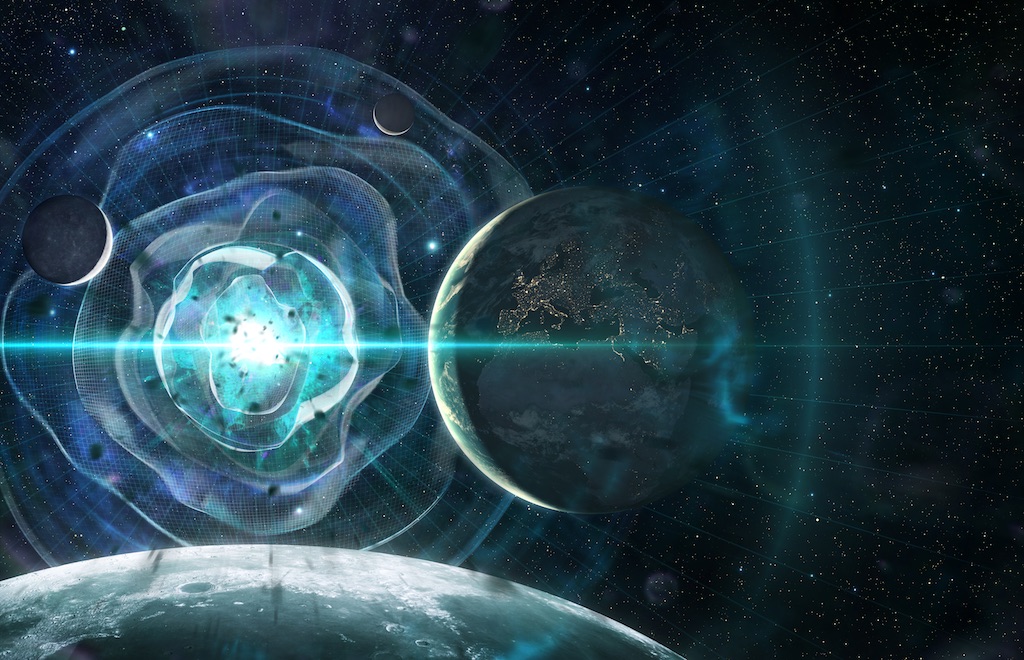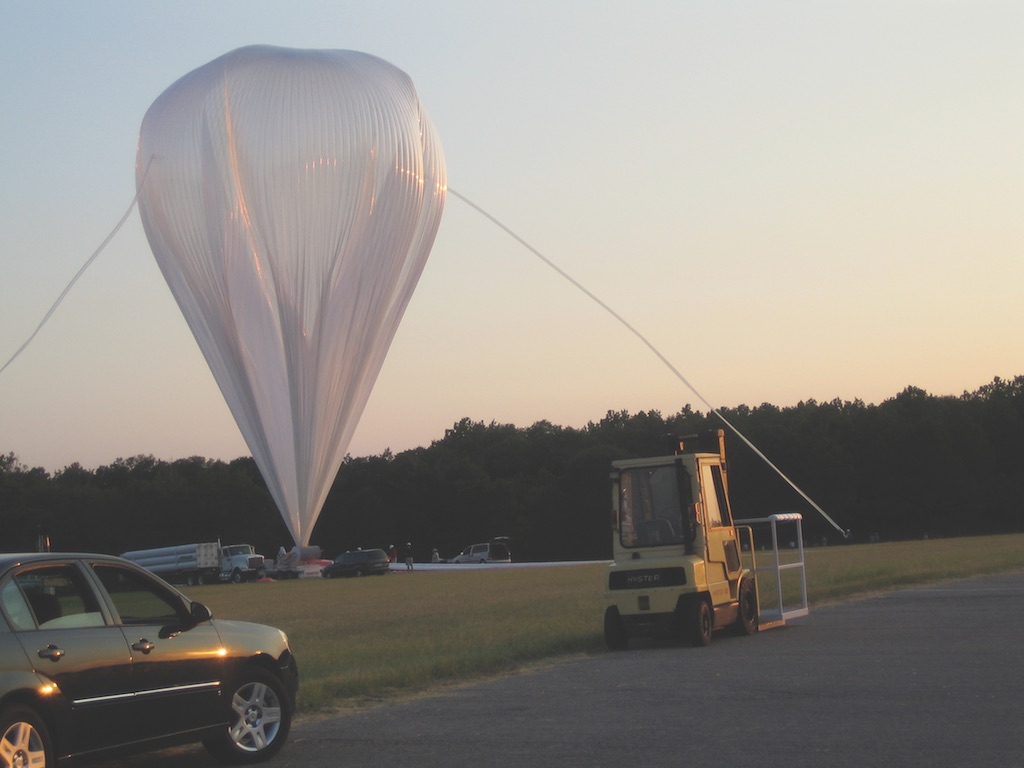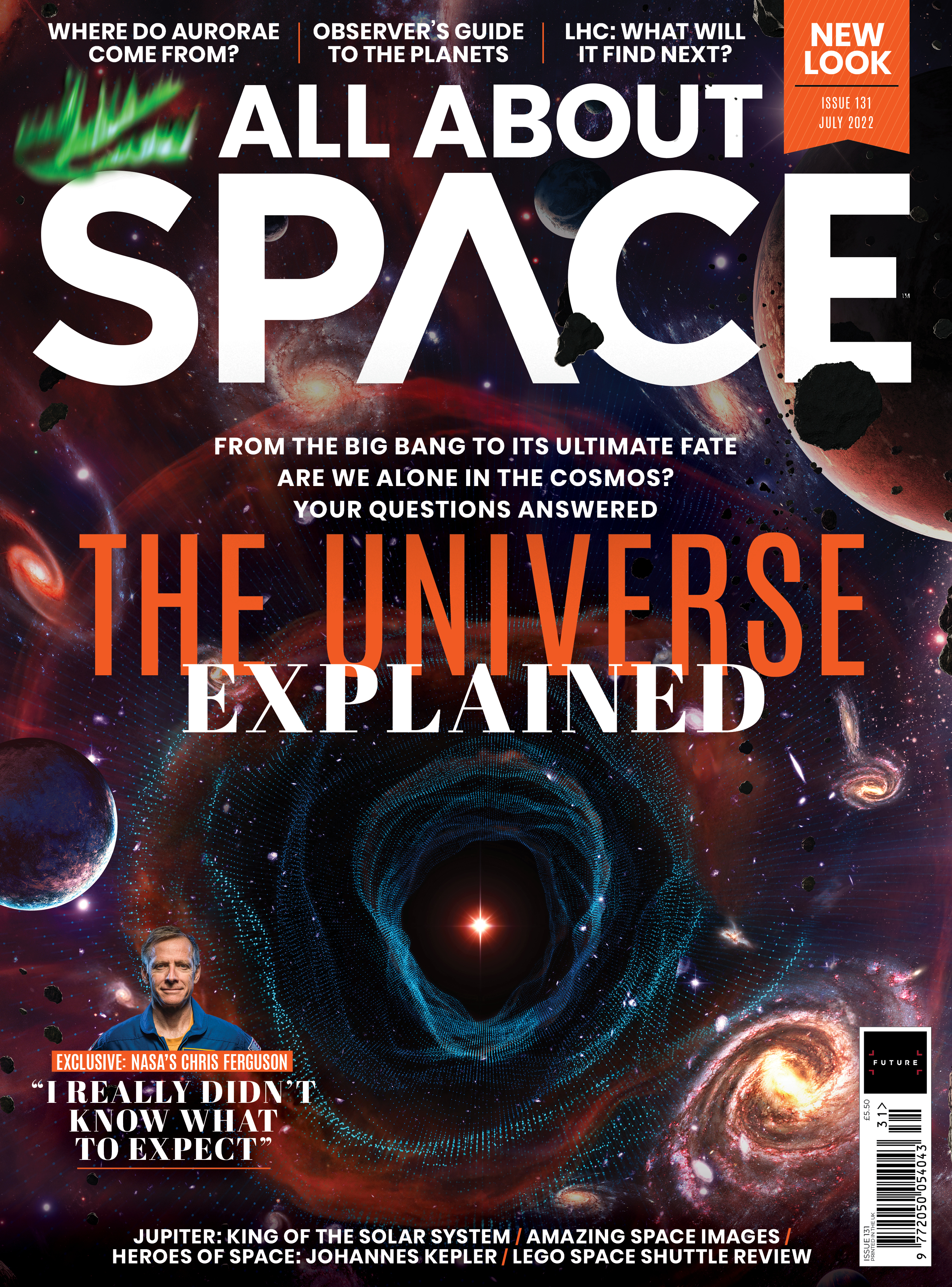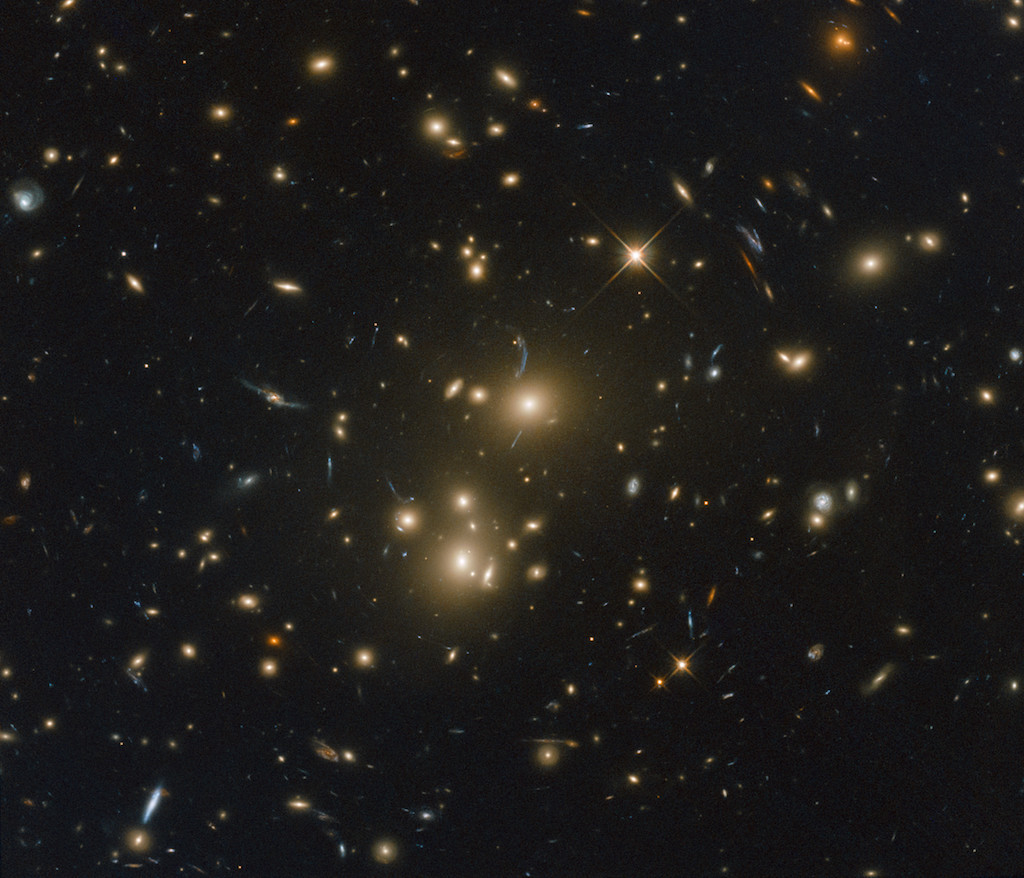Space roar: The mystery of the loudest sound in the universe
The powerful signal was six times louder than expected.

In space, nobody can hear you scream, but with the right equipment, it is possible to detect a roar. That's what scientists discovered back in 2006 when they began to look for distant signals in the universe using a complex instrument fixed to a huge balloon that was sent to space. The instrument was able to pick up radio waves from the heat of distant stars, but what came through that year was nothing short of astounding.
As the instrument listened from a height of about 23 miles (37 kilometers), it picked up a signal that was six times louder than expected by cosmologists. Because it was too loud to be early stars and far greater than the predicted combined radio emission from distant galaxies, the powerful signal caused great puzzlement. And scientists still don't know what is causing it, even today. What's more, it could hamper efforts to search for signals from the first stars that formed after the Big Bang.
The instrument that detected the mysterious roaring signal was the Absolute Radiometer for Cosmology, Astrophysics, and Diffuse Emission (ARCADE), which NASA built to extend the study of the cosmic microwave background spectrum at lower frequencies.
Related: What noises do planets make?

David Crookes is a regular contributor to Space.com and our sister publication All About Space magazine. He has written many space mystery articles ranging from a weird signal from the Milky Way to investigating whether our brains can help prove the universe is conscious.
The mission's science goals — as ARCADE floated high above Earth's atmosphere, free of interference from our planet — were to find heat from the first generation of stars, search for particle physics relics from the Big Bang and observe the formation of the first stars and galaxies. It accomplished these goals by scanning 7% of the night sky for radio signals since distant light becomes radio waves as it loses energy over distance.
A surprisingly strong signal
ARCADE was able to make "absolutely calibrated zero-level" measurements, which means it was measuring the actual brightness of something in real physical terms rather than relative terms. This was different from typical radio telescopes, which observe and contrast two points in the sky. By looking at all of the "light" and comparing it to a blackbody source, ARCADE was able to see the combination of many dim sources. It was then that the intensity of one particular signal became apparent, albeit over many months.
"While it might make a good movie to see us surprised when we see the light meter pop over to a value six times what was expected, we actually spent years getting ready for our balloon flight and a very busy night taking data," said NASA scientist Dale J. Fixsen. "It then took months of data analysis to first separate instrumental effects from the signal and then to separate galactic radiation from the signal. So the surprise was gradually revealed over months." That said, the impact was still huge.
Since then, scientists have looked to see where the radiation is coming from while looking to describe the properties of the signal. The latter became apparent rather quickly.
"It's a diffuse signal coming from all directions, so it is not caused by any one single object," said Al Kogut, who headed the ARCADE team at NASA's Goddard Space Flight Center in Greenbelt, Maryland. "The signal also has a frequency spectrum, or 'color,' that is similar to radio emission from our own Milky Way galaxy."
Scientists call the signal "radio synchrotron background" — background being an emission from many individual sources and blending together into a diffuse glow. But because the "space roar" is caused by synchrotron radiation, a type of emission from high-energy charged particles in magnetic fields, and because every source has the same characteristic spectrum, pinpointing the origin of this intense signal is difficult.
"It has been known since the late 1960s that the combined radio emission from distant galaxies should form a diffuse radio background coming from all directions," Kogut told All About Space in an email. "The space roar is similar to this expected signal, but there doesn't seem to be six times more galaxies in the distant universe to make up the difference, which could point to something new and exciting as the source."

Is the space roar coming from inside the Milky Way?
Whether or not this source is inside or outside the Milky Way is under debate.
"There are good arguments why it cannot be coming from within the Milky Way, and good arguments for why it cannot be coming from outside the galaxy," Kogut said.
One reason it probably isn't coming from within our galaxy is because the roar doesn't seem to follow the spatial distribution of Milky Way radio emission. But nobody is saying for certain that the signal isn't from a source closer to home — only that the smart money is on it coming from elsewhere.

This article is brought to you by All About Space.
All About Space magazine takes you on an awe-inspiring journey through our solar system and beyond, from the amazing technology and spacecraft that enables humanity to venture into orbit, to the complexities of space science.
"I wouldn't quite say that scientists have largely ruled out the possibility of the radio synchrotron background originating from our galaxy," said Jack Singal, an assistant professor of physics at the University of Richmond in Virginia, who recently led a workshop on the matter. "However, I would say that this explanation does seem to be less likely.
"The primary reason is that it would make our galaxy completely unlike any similar spiral galaxy, which as far as we can tell do not exhibit the sort of giant, spherical, radio-emitting halo extending far beyond the galactic disk that would be required. There are other issues as well, such as that it would require a complete rethinking of our models of the galactic magnetic field."
Fixsen agrees wholeheartedly. "In other spiral galaxies there is a close relation between the infrared and radio emission, even in small sections of these others," he said. "So, if it is from a halo around our galaxy, it would make the Milky Way a weird galaxy, while in most other respects it seems like a 'normal' spiral galaxy."
Extragalactic origin?
Experts think the signal is primarily extragalactic in origin. "It would make it the most interesting photon background in the sky at the moment because the source population is completely unknown," Singal said. But since the universe is so vast this doesn't exactly narrow things down that much, which is why scientists have been working hard to come up with multiple theories for the signal's source.
American physicist David Brown, for example, said the space roar could be "the first great empirical success of M-theory," a broad mathematical framework encompassing string theory. "There might be a Fredkin-Wolfram automaton spread across multitudes of alternate universes, yielding recurrent physical time with endless repetitions of all possible physical events," Brown wrote on the FQXi Community blog. What this supposes is that the early universe had much more real matter than today, accounting for the powerful radio signal.
The space roar could be "the first great empirical success of M-theory," a broad mathematical framework encompassing string theory.
- Physicist David Brown
But if that is too far out, there are other theories to get your teeth into. "Radio astronomers have looked at the sky and have identified a couple of types of synchrotron sources," Fixsen said.
Synchrotron radiation is easy to make, he said. "All you need is energetic particles and a magnetic field, and there are energetic particles everywhere, produced by supernovas, stellar winds, black holes, even OB stars," which are hot, massive stars of spectral type O or early-type B. "Intergalactic space seems to be filled with very hot gas, so if intergalactic magnetic fields were strong enough [stronger than predicted], they could generate smooth synchrotron radiation," he said.
It is also known that synchrotron radiation is associated with star production. "This also generates infrared radiation, hence the close correlation," Fixsen said. "But perhaps the first stars generated synchrotron radiation yet, before metals were produced, they did not generate very much infrared radiation. Or perhaps there is some process that we haven't thought of yet."
So what does this leave us with? "Possible sources include either diffuse large-scale mechanisms such as turbulently merging clusters of galaxies, or an entirely new class of heretofore unknown incredibly numerous individual sources of radio emission in the universe," Singal said. "But anything in that regard is highly speculative at the moment, and some suggestions that have been raised include annihilating dark matter, supernovas of the first generations of stars and many others."
Some scientists have suggested gases in large clusters of galaxies could be the source, although it's unlikely ARCADE's instruments would have been able to detect radiation from any of them. Similarly, there is a chance that the signal was detected from the earliest stars or that it is originating from lots of otherwise dim radio galaxies, the accumulative effect of which is being picked up. But if this was the case then they'd have to be packed incredibly tightly, to the point that there is no gap between them, which appears unlikely.

How the 13-year-old mystery could be solved
"Of course, there is also the possibility that there has been a coincidence of errors among ARCADE and the other measurements to date that have mismeasured the level of the radio synchrotron background," Singal said. "This does seem unlikely, given that these are very different instruments measuring in quite different frequency bands."
Whatever the signal is, it's also causing issues when it comes to detecting other space objects. As NASA has pointed out in the past, the earliest stars are hidden behind the space roar, and that is making them more difficult to detect. It's as if the universe is giving with one hand and taking with another, but to have uncovered something so unusual is immensely exciting. When you're ruling out an origin from primordial stars and known radio sources such as gas in the outermost halo of our galaxy, it's a mystery any scientist would savour with relish.
"Beyond that, I think we may need some brilliant new origin hypothesis that nobody has thought of yet."
- Astrophysicist Jack Singal
In order for scientists to finally resolve this 13-year conundrum, more research and evidence is sorely needed. As it stands, there is a debate over sending ARCADE back up given the advent of new technology, and given its precise set of instruments, immersed in more than 500 gallons of ultra-cold liquid helium to make them even more sensitive, there would certainly be no harm in doing so.
But there are also new projects emerging which could help. "One of them will use the 300-foot [91 meter] radio telescope at Green Bank, West Virginia, to map the radio sky to higher precision than before," Kogut said. "Perhaps this will shed some light on the mystery."
Singal certainly hopes so. He is working on the Green Bank Telescope project, making use of the largest clear-aperture radio telescope in the world to measure the level of the background as a primary, rather than ancillary goal. It will do this using a definitive, purpose-built, absolutely calibrated zero-level measurement taken at the megahertz (MHz) frequencies where the radio sky is brightest. (A megahertz is equal to a million hertz.)
"This measurement is currently being developed by a team which I am on, utilizing custom instrumentation which will be mounted on the telescope," Singal explained. There is also going to be another measurement attempt, this one looking to measure or further limit the so-called "anisotropy," or variation of the radio synchrotron background, again at the MHz frequencies where it dominates.
"That is not its absolute level, but rather the small differences from place to place in the sky," Singal said. "With some collaborators, I am trying a first attempt at that using the Low-Frequency Array [LOFAR] in The Netherlands. Both of these measurements in concert can help nail down whether the radio synchrotron background is primarily galactic or extragalactic in origin. Beyond that, I think we may need some brilliant new origin hypothesis that nobody has thought of yet."
This article was adapted from a previous version published in All About Space magazine, a Future Ltd. publication.
Additional resources
Read more about the Absolute Radiometer for Cosmology, Astrophysics, and Diffuse Emission (ARCADE) mission from NASA's Goddard Space Flight Center. Learn about synchrotron radiation with the National Radio Astronomy Observatory (NRAO). Discover more about the Low-Frequency Array (LOFAR) radio telescope from ASTRON Netherlands Institute for Radio Astronomy.
Bibliography
Becker, K. (2017, August 28). Galaxy clusters offer clues to dark matter and Dark Energy. Phys.org. Retrieved September 20, 2022, from https://phys.org/news/2017-08-galaxy-clusters-clues-dark-energy.html
Brown, D. Is Milgrom's modified Newtonian Dynamics (MOND) fundamental for philosophy, science, and the physical interpretation of string theory? Retrieved September 20, 2022, from https://fqxi.org/community/forum/topic/2985
NASA. Arcade - absolute radiometer for cosmology, astrophysics, diffuse emission. NASA. Retrieved September 20, 2022, from https://asd.gsfc.nasa.gov/archive/arcade/
Join our Space Forums to keep talking space on the latest missions, night sky and more! And if you have a news tip, correction or comment, let us know at: community@space.com.
Breaking space news, the latest updates on rocket launches, skywatching events and more!

David Crookes is a UK-based science and technology journalist who has been writing professionally for more than two decades. Having studied at the University of Durham in England, he has written for dozens of newspapers, magazines and websites including The Independent, The i Paper, London Evening Standard, BBC Earth, How It Works and LiveScience. He has been a regular contributor to Space.com's sister publication, All About Space magazine since 2014.
-
ARTGLICK Ah, space hype. Accuracy gives way to click bait. 23 miles is hardly "outer space" by any definition, and radio waves are hardly "sound" by any definition. But it makes for good click bait. Right up there with "God Particle" for the Higgs and "Theory of Everything" for the UFT. Well done.Reply -
Fjet2020 The answer is easy. Do ALL of the above. You have an instrument ready to go again. Use it! Develop new ones. Why be limited? Put an entrepreneur in charge. We get stuff done!Reply -
Jabbadonut Reply
Uh . . . sorry . . . didn't mean for that fart to be so big . . . just don't inhale for a bit . . .Admin said:The space roar, which was detected by NASA's ARCADE mission in 2006, makes space six-times louder than anyone was expecting — have we finally found the cause?
Space roar: NASA detected the loudest sound in the universe, but what is it? : Read more -
Xinhang Shen In the article, there is an interesting fact that "distant light becomes radio waves as it loses energy over distance" which tells us that interstellar vacuum space is not empty but filled up with a medium to absorb the lost energy from the light. This medium is called aether - a fluid medium for propagating light and other electromagnetic waves, which fills up the entire visible space around us. This is another evidence of the existence of aether. Just as the speed of sound is isotropic only relative to local air, the speed of light is isotropic only relative to local aether. Thus, the existence of aether as an evidence to disproves Einstein's special relativity is as strong as the evidence to disprove special relativity: the universally synchronized time shown by all the atomic clocks on the GPS satellites is absolute, not relative as claimed by special relativity which tells us that clocks can never be synchronized relative to more than one inertial reference frame no matter how you correct them. For more details disproving special relativity, please see https://www.researchgate.net/publication/297527784_Challenge_to_the_Special_Theory_of_RelativityReply
The disproof of special relativity and the restore of the absolute time and the 3D space directly deny the Big Bang theory, and thus, all efforts based on these wrong theories are waste of money and time. -
Jabbadonut Reply
How does this deny the Big Bang Theory?Xinhang Shen said:In the article, there is an interesting fact that "distant light becomes radio waves as it loses energy over distance" which tells us that interstellar vacuum space is not empty but filled up with a medium to absorb the lost energy from the light. This medium is called aether - a fluid medium for propagating light and other electromagnetic waves, which fills up the entire visible space around us. This is another evidence of the existence of aether. Just as the speed of sound is isotropic only relative to local air, the speed of light is isotropic only relative to local aether. Thus, the existence of aether as an evidence to disproves Einstein's special relativity is as strong as the evidence to disprove special relativity: the universally synchronized time shown by all the atomic clocks on the GPS satellites is absolute, not relative as claimed by special relativity which tells us that clocks can never be synchronized relative to more than one inertial reference frame no matter how you correct them. For more details disproving special relativity, please see https://www.researchgate.net/publication/297527784_Challenge_to_the_Special_Theory_of_Relativity
The disproof of special relativity and the restore of the absolute time and the 3D space directly deny the Big Bang theory, and thus, all efforts based on these wrong theories are waste of money and time. -
Xinhang Shen Reply
The Big Bang theory is based on Einstein's relativity.Jabbadonut said:How does this deny the Big Bang Theory? -
Jabbadonut Reply
You'll have to be more specific as to why this theory regarding the nature of space conflicts with Einstein. The GENERAL theory of relativity is what the Big Bang theory is based upon, not the Special Theory. https://www.livescience.com/65700-big-bang-theory.htmlXinhang Shen said:The Big Bang theory is based on Einstein's relativity. -
Xinhang Shen Reply
All relativity theories are based on relativistic spacetime which has been disproved because time is absolute.Jabbadonut said:You'll have to be more specific as to why this theory regarding the nature of space conflicts with Einstein. The GENERAL theory of relativity is what the Big Bang theory is based upon, not the Special Theory. https://www.livescience.com/65700-big-bang-theory.html -
Jabbadonut Reply
Please cite a source that says "time is absolute." Thanks. (haven't heard that before)Xinhang Shen said:All relativity theories are based on relativistic spacetime which has been disproved because time is absolute. -
Xinhang Shen Reply
https://www.researchgate.net/publication/297527784_Challenge_to_the_Special_Theory_of_RelativityandJabbadonut said:Please cite a source that says "time is absolute." Thanks. (haven't heard that before)
https://www.researchgate.net/publication/297528348_Clock_Time_Is_Absolute_and_Universal

